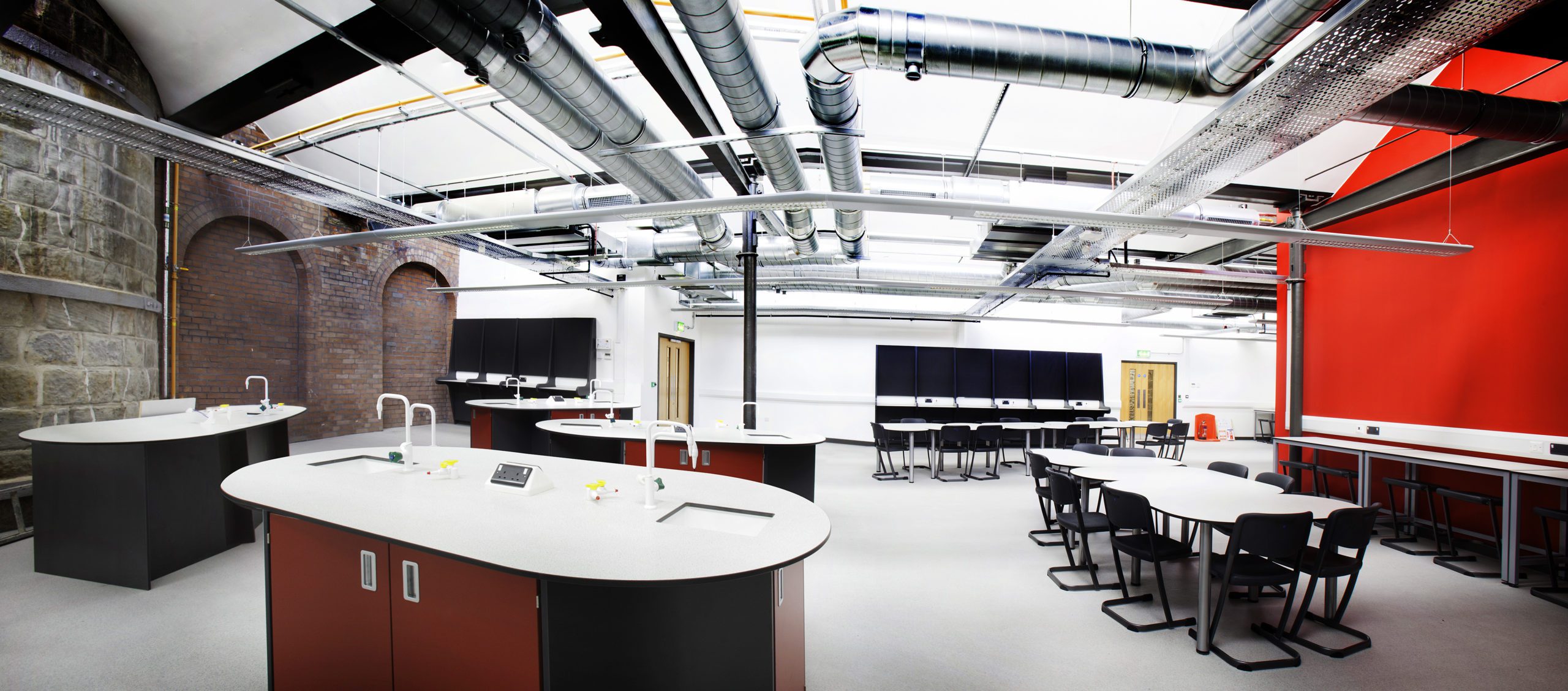What Makes an Inspiring Science Lab?
As science and technology continues to evolve, so must the teaching practices in our schools, colleges and universities. Modern Science laboratories need to be designed flexibly so they can be reconfigured quickly and safely to suit their changing needs.
Space
Cramped and claustrophobic conditions are not conducive to progressive learning, particularly in science laboratories. Students must be given room to explore ideas and scientific theories without feeling inhibited in their movement or thought processes. Furthermore, tutors require well-designed practical rooms allowing them to oversee the whole laboratory output.
Inspirational and functional designs will create a more productive laboratory, as they take into consideration all curricular requirements whilst retaining sufficient space for students and course leaders to navigate the room.
Functionality
When designing a laboratory every factor needs to be well considered, from efficient storage solutions to the location of key services such as gas taps and sinks. Effective storage solutions help to keep resources and equipment to hand at all times, reducing valuable set up time for practicals, and provides more time concentrating on the task.
Using durable, high-quality materials will ensure the laboratory withstands the rigours of education. Innova utilises a wide selection of modern surfacing materials (including Trespa, Corian, Velstone, Staron, LG and Avonite) purposefully designed to retain functionality and longevity throughout intense and varied use.
Customisation
The modern science laboratory needs to perform two very basic functions; serving as both a foundation for practical and theoretical learning. Innova’s Hot Corners concept allows desks to be used effectively for both individual and group work, in line with the curriculum requirements.
When practical or group work needs to be completed, the Hot Corners desks offer a large, rounded surface area so students can work collaboratively. Theoretical learning can be aided by the Hot Corners’ dual-functionality, with students seated facing the course leader with shorter lines of communication.
Interaction
Whilst the equipment and features of the laboratory is incredibly important to learning, it is vital there is a high level of interaction between students and tutors. Without this, knowledge and ideas cannot be shared. A science laboratory conducive to interactivity can serve to provide inspiration to all users of the space.
Intelligent science laboratory design can facilitate excellent communication between students and teachers. This includes ensuring acoustics and other environmental factors are incorporated to benefit teaching and learning.


